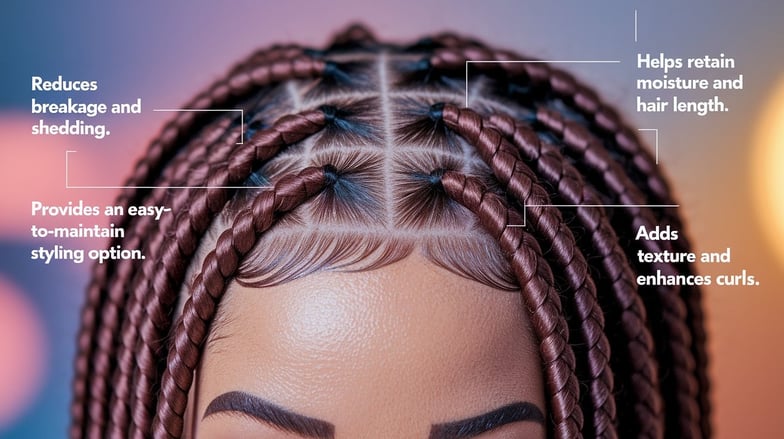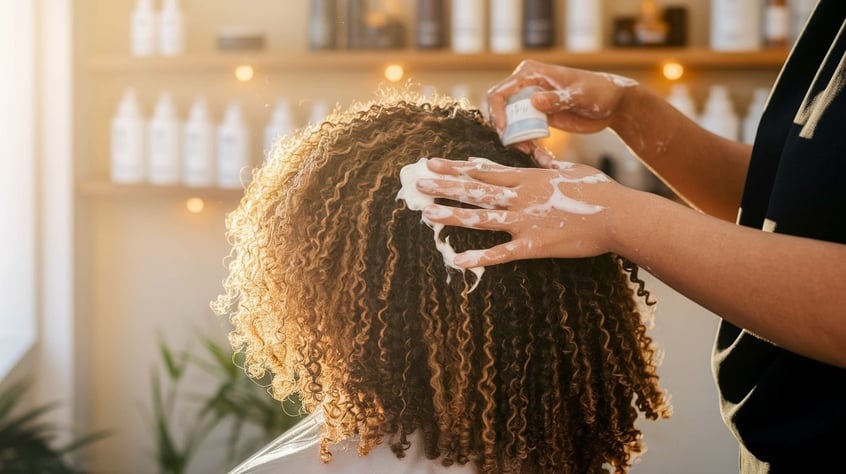How to Transition from Braids to Locs While Maintaining Protective Styles for Natural Hair
Effortlessly transition from braids to locs while maintaining protective styles for natural hair with expert tips from Kwik Fingaz Beauty Salon.
DREADLOCK & LOC MAINTENANCEPROTECTIVE STYLES
Hazel Vaz
3/1/20253 min read


How to Transition from Braids to Locs While Maintaining Protective Styles for Natural Hair
Introduction
Hey, beautiful! If you’re thinking about transitioning from braids to locs, I totally get it. This is a big step in your natural hair journey, and trust me, I’ve been there! It’s a process filled with excitement, patience, and lots of learning. But guess what? Protective styles are your best friend during this transition.
At Kwik Fingaz Beauty Salon, we know firsthand how essential protective styles are for keeping your hair healthy. I remember when I made the shift—I wanted my locs to start strong, but I also needed a way to protect my hair from too much manipulation. That’s why I’m sharing everything I’ve learned so you can make the transition smooth, stylish, and stress-free!


Understanding the Journey from Braids to Locs
Before I started my loc journey, I had so many questions: How long will it take? Will my hair break? Can I still style it like I used to? If you’re wondering the same things, you’re not alone! Braids and locs protect natural hair by reducing breakage and promoting growth, but they come with different maintenance needs.
Benefits of Protective Hairstyles
✔ Reduces breakage and shedding
✔ Helps retain moisture and hair length
✔ Provides an easy-to-maintain styling option
✔ Adds texture and enhances curls
When I first transitioned, I chose knotless braids because they were lightweight and gentle on my scalp. If your hair is fragile, opt for softer styles like twists. If your hair is thicker, locs or crochet braids may be better suited.
Preparing Your Natural Hair for the Transition
Healthy hair is key to a smooth transition from braids to locs. Here are some game-changing steps that worked wonders for me:
✅ Deep Condition Weekly – My secret weapon for keeping my hair soft and manageable.
✅ Use Water-Based Moisturizers – I always check that water is the first ingredient.
✅ Trim Dead Ends Regularly – Say goodbye to split ends before they cause damage.
✅ Minimize Heat Styling – My flat iron stayed in the drawer, and my hair thanked me for it!
✅ Protective Styling – I rocked kinky twists and box braids to make the transition easier.
Tip: The transition period can take up to 8 months, so consistency is key. Be patient with your hair—it’s worth it!




Best Protective Styles for the Transition
While waiting for your locs to mature, protective styles can be a lifesaver. Here are my go-to styles:
1. Knotless Box Braids
Lightweight and easy on the scalp
Can last up to 8 weeks with proper care
2. Bantu Knots
Protects hair while enhancing curl definition
Keeps hair from tangling as it transitions
3. Head Wraps & Scarves
Provides low-maintenance protection
Keeps moisture locked in
Moisturizing Tip: Use a leave-in conditioner to prevent product buildup and dryness.
The Initial Loc Formation Process
Starting locs is exciting but also requires a lot of patience! I remember when my locs were just tiny buds, and I couldn’t wait for them to mature. The early stages, known as starter locs, are fragile and prone to unraveling.
Key Steps in the Loc Formation Process:
🔹 Section Your Hair Properly – Helps control thickness and uniformity.
🔹 Use Rubber Bands or Bonnets at Night – Prevents unraveling while sleeping.
🔹 Expect the Budding Phase – This is when your hair starts forming locs.
🔹 Palm Rolling for Fine Hair – Helps locs take shape faster.

Conclusion: Embracing Your Natural Hair Journey
Making the switch from braids to locs was one of the best decisions I ever made for my hair. The journey was filled with lessons, but embracing my natural beauty made it all worth it. If you’re considering this transition, trust the process and enjoy every stage of it!
Your hair is unique, and so is your journey. Stay patient, stay consistent, and most importantly, love every part of the process.